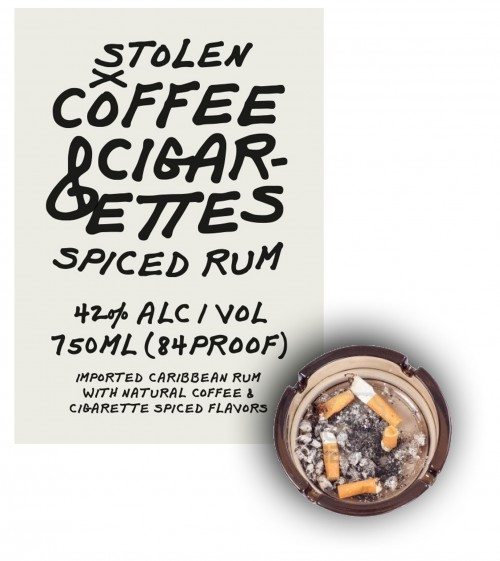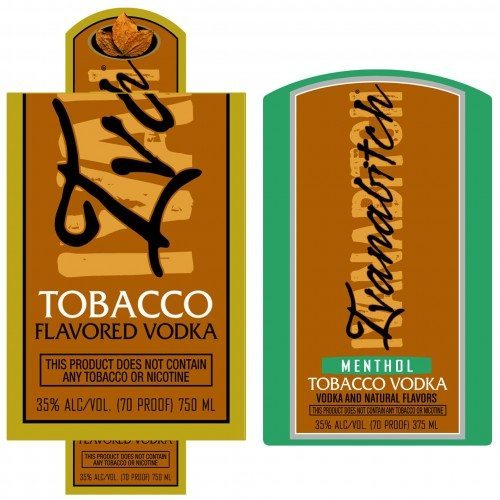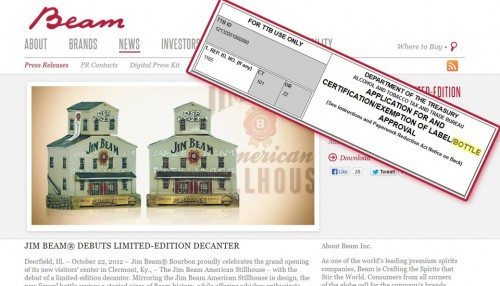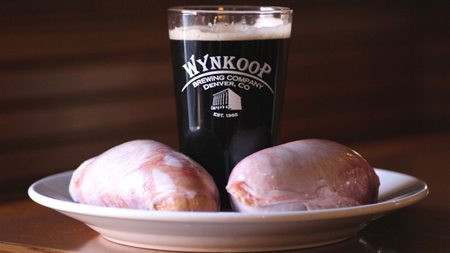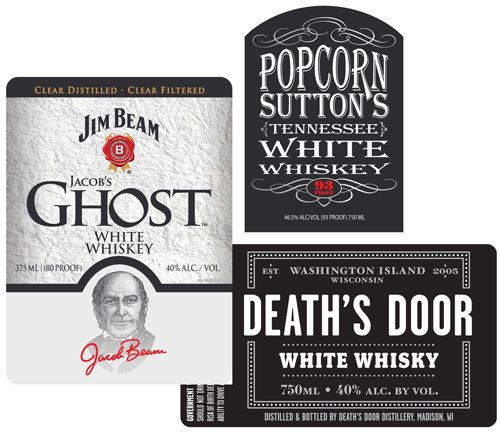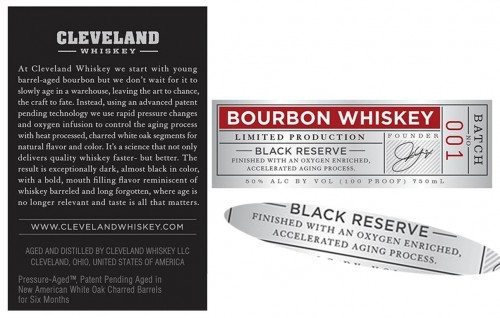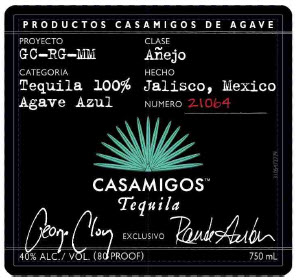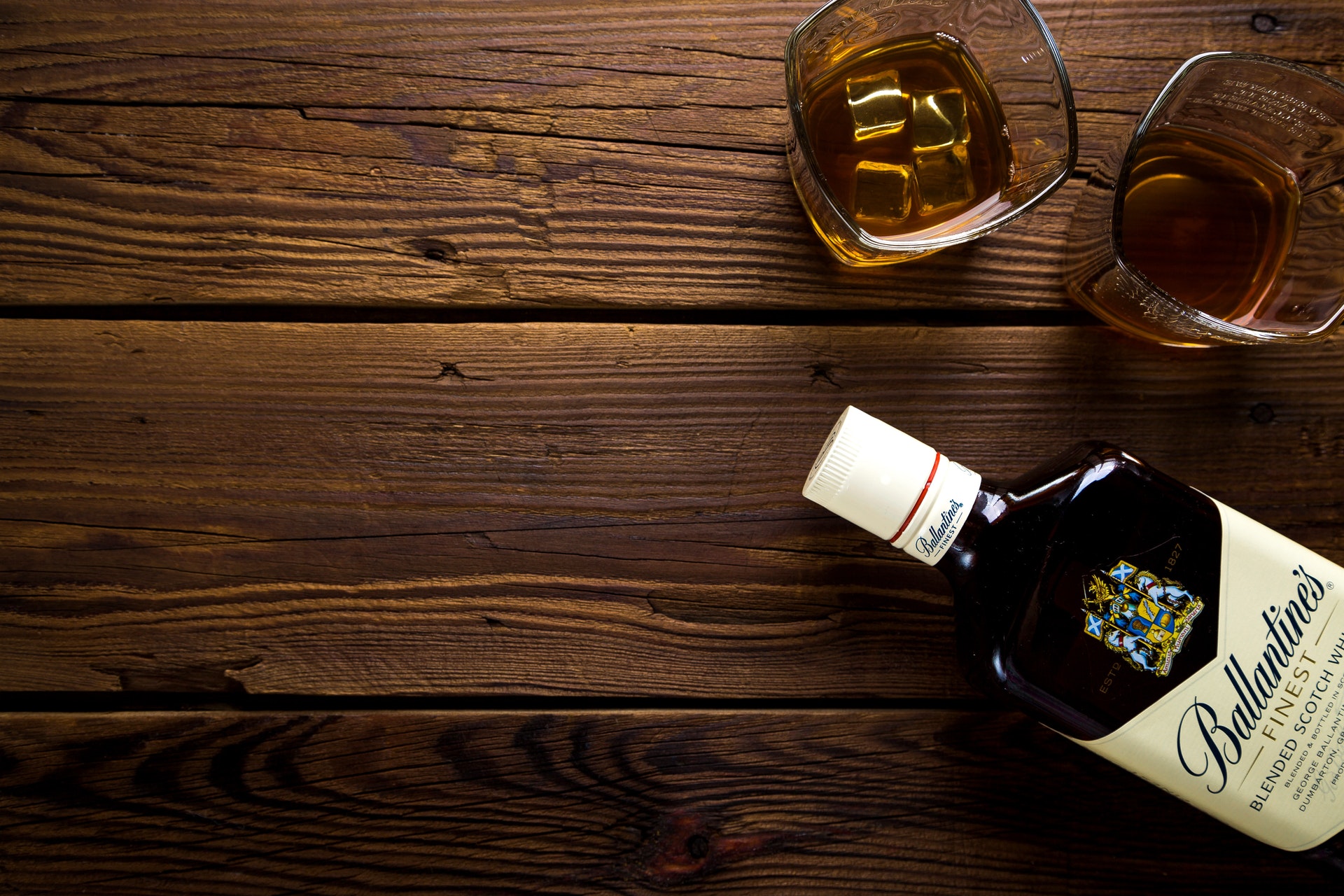First we saw tobacco vodka. Then, a bit further down the same smoky trail, we saw this — cigarette flavored rum. I am still not sure whether it’s a dare or somebody actually wants to drink it. The cigarette flavored rum was actually approved a few weeks prior.
Tobacco Vodka
Turning against the tide of a great many cake and candy flavored vodkas, this brand has cut in the direction of something rather surprising — tobacco flavored vodka. Credit to Robert Back of International Spirits (Jacksonville, Florida) for pulling this off. It probably was not easy, and it comes complete with a disclaimer that THIS PRODUCT DOES NOT CONTAIN ANY TOBACCO OR NICOTINE. The regular, flavored vodka version is here. The menthol version is here (distilled spirits specialty). The company explains:
“With over 45 million people in the United States identifying themselves as smokers, our new tobacco flavored vodkas will be sure to find a niche in the already crowded flavored vodka market,” said International Spirits’ CEO Tony Elward. “We’re also confident that non-smokers will enjoy the new tobacco flavor product as our customers are always looking for the next big thing.”
Ivanabitch Traditional Tobacco Vodka features a bold taste of smoky vanilla blended with sweet caramel. The Menthol Tobacco Vodka features the same taste as the Traditional Tobacco Vodka with a hint of mint.
A product of the Netherlands, all flavors of Ivanabitch are formulated using all-natural flavorings, are 70 proof and five times distilled and then filtered over active charcoal.
Although I don’t think anyone should hold their breath for a nicotine flavored or infused vodka, the next logical step might be something like this Perique Tobacco Liqueur (made with tobacco, unlike what is in the disclaimer above). So far, I don’t see any sign of TTB approval on Perique.
Distinctive Containers
Most people call them COLAs or FLAs (federal label approvals) or “label approvals.” But those terms leave out the not so minor B — as it appears in the word “bottle,” highlighted above. TTB’s pre-market approval system extends to bottles, and it is starting to seem like many people forgot about this or never knew.
TTB’s bottle review probably does not cover run of the mill bottles. It is meant to cover “distinctive bottles.” The COLA form mentions that you must complete item 18.c. “if you intend to bottle distilled spirits in a distinctive container.” It’s not so easy to know what is and isn’t distinctive. The regulations use the term “distinctive” many times, and even explain the requirements for distinctive bottles, but they don’t explain when bottles are and aren’t.
It is good to know that Jim Beam Brands, at least, still knows how to do this right, and can serve as a good reminder to others. The above Stillhouse Decanter certainly appears to be — on the distinctive side — for a bottle. And alas, the corresponding approval is here; item 18.c. seems to be duly completed to verify that the bottle is both distinctive and approved.
Beam’s press release puts things in perspective and explains that even Jim Beam does not use distinctive containers especially often anymore:
Mirroring the Jim Beam American Stillhouse in design, the new figural bottle revives a storied piece of Beam history, while offering whiskey enthusiasts and collectors the opportunity to add to their collection for the first time in more than a decade. … “Since the early 1950s, hundreds of Beam decanters have celebrated politics, sports, history and more.” … “Beam decanters have come in all shapes and sizes,” said Fredrick “Fred” Booker Noe III, seventh generation Jim Beam master distiller.
Individually hand-crafted by Louisville Stoneware, the Jim Beam American Stillhouse decanter joins hundreds of artfully designed, limited-edition decanters on display in the new Jim Beam American Stillhouse production tour. … Only 1,000 of the limited-edition Stillhouse decanters are available for sale (SRP: $199.99) … .
Originally created to help drive sales and offer bourbon fans more eye-catching packaging suitable for gifting, the specialty bottles and decanters were designed by the Regal China Company and introduced by Jim Beam to the public in 1955. For more than 40 years, the Regal China bottles celebrated many subject areas and reflected the rich traditions of Jim Beam Bourbon. Custom bottles were produced for the Jim Beam collectors’ club chapters, which were formed in 1966 and are collectively known around the globe today as the International Association of Jim Beam Bottle and Specialty Club. Bottle production ceased in the early 1990s only to be brought back by Jim Beam in 2012.
The COLA Registry search does not make it easy to find distinctive container approvals, so here is one more example of such a decanter (from a shelf at TTB). And here are some other examples from this blog.
Stout Brewed with Bull Testicles
Not so long ago, beer with (actual) oysters seemed unusual. But Wynkoop’s beer goes quite a bit further. It contains no oysters. Instead it is brewed with bull testicles.
Denver Westword reports:
head brewer Andy Brown secured 25 pounds of Rocky Mountain oysters, a local delicacy, which the staff in the Wynkoop’s kitchen hand-sliced and then roasted.
“Initially, [TTB] wanted us to provide some information on bull testicles as a food additive,” Wynkoop spokesman Marty Jones says of the [TTB]. “I am not sure they were aware that bull testicles are an actual food and that they are a regional delicacy out west.”
TTB not only was concerned about Wynkoop’s “oysters,” but also about the manner in which they were described. For example, the term “oysters” should not be larger than “Rocky Mountain.” And it’s ok to describe the nutty, ballsy “notes” but best not to talk about their “flavors.” For many more examples of beverages made with — meat — see here.
White Whiskey
A few weeks ago we wrote about moonshine and now we have occasion to write about its close relative, White Whiskey.
Products like the above have become quite popular within the past few years, for reasons well explained by Slate:
The term white whiskey is basically a marketing name for what distillers call white dog, referring to grain-based spirits that haven’t been aged in wood to improve their flavor. [Sometimes] it’s just called moonshine, but legal sales of white dog in recent years have helped upstart microdistilleries earn immediate revenue while their whiskies age. That’s because white dog can be bottled and sold immediately after being distilled without accruing any additional storage and aging expenses. The moonshine connection has been a useful marketing gimmick for hip urban bars, but there’s one considerable downside to white dog: It tastes horrible.
At first, TTB was skeptical and pushed back a bit (saying, for example, there is no such category in the regulations). But as the trickle became a deluge, TTB began to allow white whiskey products more freely. In the light of a large number of recent approvals, it becomes clearer that TTB chiefly wants WHISKEY and WHITE on two different lines — more like Beam and less like Death’s Door (as above). Less clear is whether such products need a formula approval (adding the formula step can add 4-5 weeks to what is already a 4-5 week project). Most of the recent label approvals do not refer to any formula approval, as in the following examples.
Formula mentioned
Formula not mentioned
Chuck Cowdery has lots of discussion about closely-related topics, such as the unaged Jack Daniel’s product, here.
Oxygen Enriched Bourbon
This Bourbon label caught our eye because it makes several big claims. It says:
- FINISHED WITH AN OXYGEN ENRICHED, ACCELERATED AGING PROCESS
- Patent Pending
- Pressure-Aged
- “we use rapid pressure changes and oxygen infusion to control the aging process”
- “age is no longer relevant and taste is all that matters.”
That’s a lot of envelope-pushing and innovation for one label. We happen to know a person who is both an experienced patent lawyer and an experienced whiskey distiller. So, in a future post, we hope to have him review the patent claims and assess whether this is closer to an innovation or a gimmick. The Bourbon is produced and bottled by Cleveland Whiskey, LLC of Cleveland, Ohio. The approval is here. Terressentia’s closely-related patent, also for aging spirits quickly, is described here.
